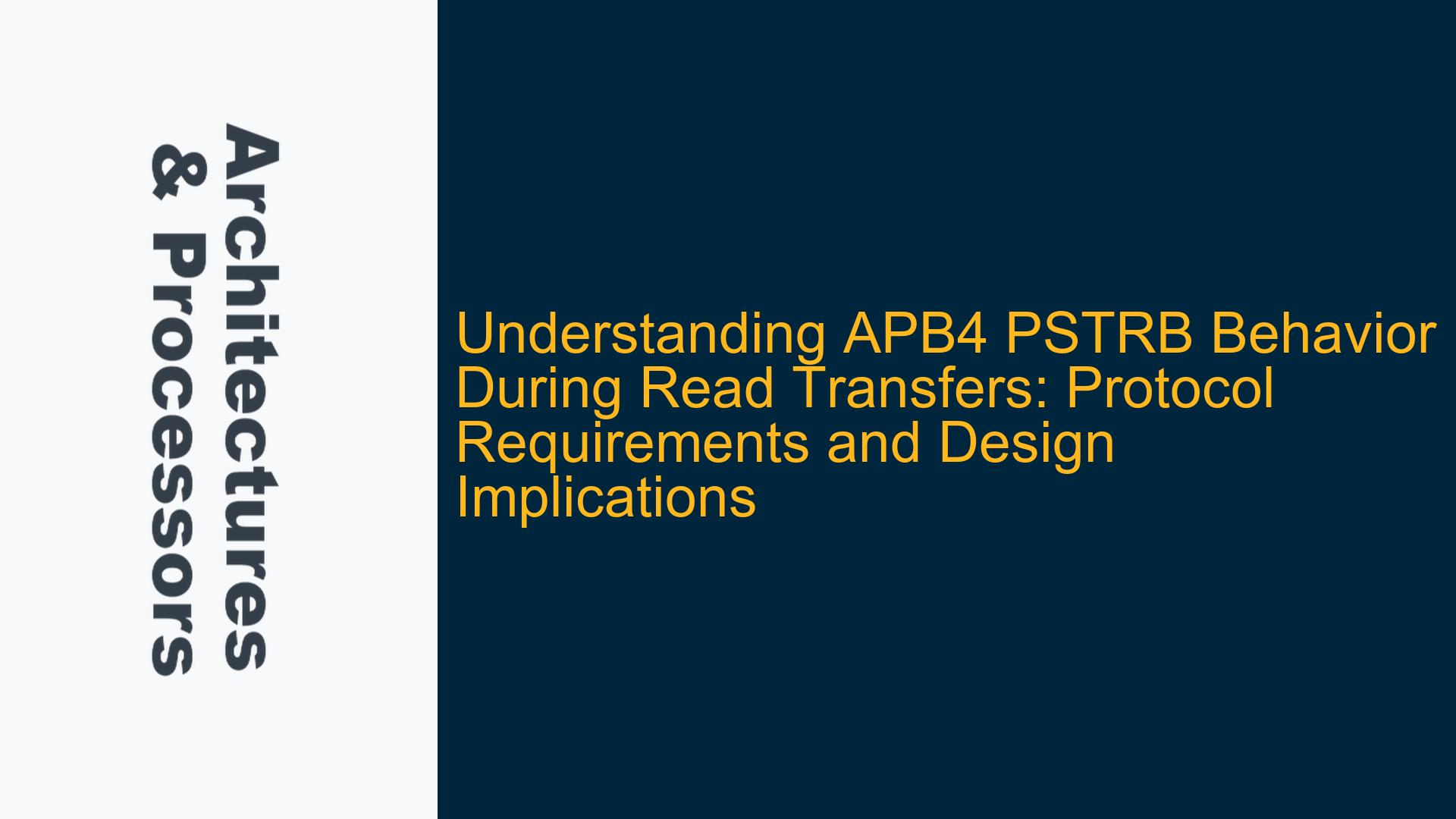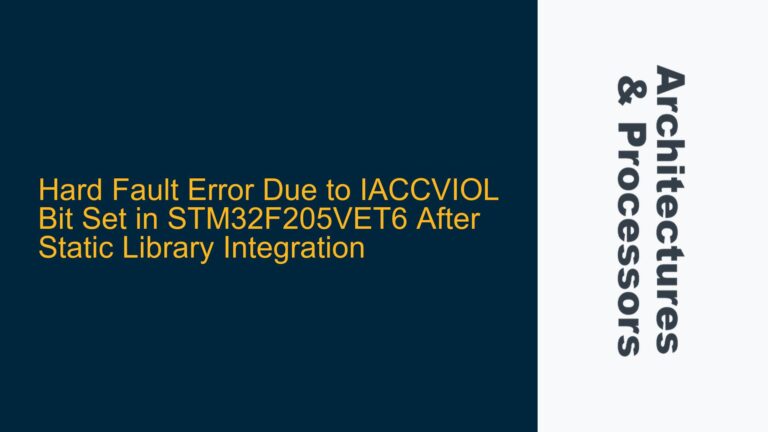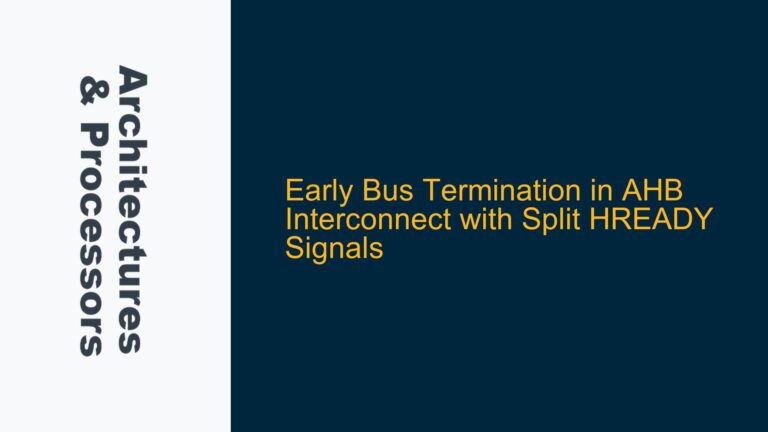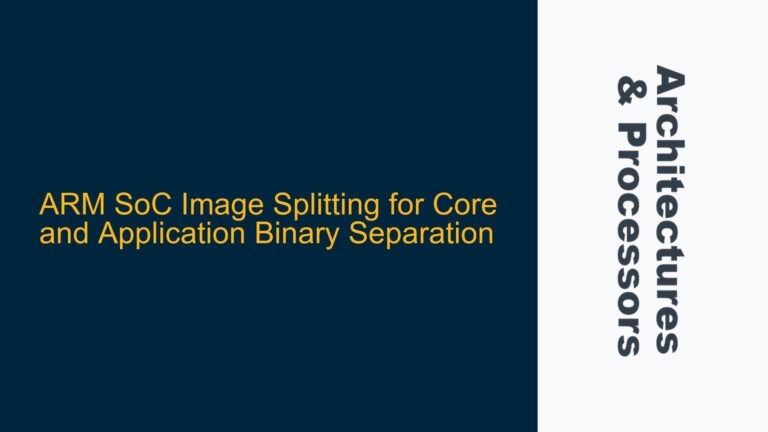APB4 PSTRB Signal Behavior During Read Transfers
The APB4 protocol, as part of the ARM AMBA family, is designed to be a simple, low-power, and low-complexity interface for peripherals. One of its key features is the inclusion of the PSTRB signal, which is a write strobe used to indicate valid byte lanes during write transactions. However, the protocol mandates that PSTRB must be driven low during read transfers, a requirement that has raised questions among designers. This behavior is not arbitrary but is rooted in the protocol’s design philosophy and its intended use cases.
The PSTRB signal is inherently a write strobe, meaning its primary function is to indicate which bytes of the write data bus (PWDATA) are valid during a write transaction. During read transfers, the PWDATA bus is not used, and the read data is returned on the PRDATA bus. Since PSTRB is tied to the write data bus, it logically has no meaning during read operations. However, the protocol explicitly requires PSTRB to be driven low during reads, rather than leaving it undefined or allowing it to be ignored. This design choice is intentional and serves several purposes, including preventing potential misuse of the signal and simplifying peripheral design.
The APB4 protocol is often used in microcontroller systems where simplicity and predictability are paramount. By mandating that PSTRB be driven low during reads, the protocol ensures that there is no ambiguity about the signal’s state. This predictability simplifies the design of peripherals, as they do not need to account for undefined or unpredictable behavior of PSTRB during read operations. Additionally, this requirement prevents potential misuse of the signal, such as using it to infer byte lane validity during reads, which could lead to incorrect system behavior.
Potential Misuse of PSTRB During Read Transfers and Protocol Safeguards
One of the primary reasons for mandating that PSTRB be driven low during read transfers is to prevent potential misuse of the signal. If PSTRB were left undefined or allowed to be ignored during reads, there is a risk that peripheral designers might misinterpret its state. For example, a designer might incorrectly assume that PSTRB could be used to indicate which byte lanes are valid during a read transfer, even though the protocol does not define such a use case. This misinterpretation could lead to incorrect system behavior, particularly in systems where peripherals are designed by less experienced engineers or where the APB4 interface is used as an external expansion port.
The APB4 protocol is designed to be simple and predictable, making it accessible to a wide range of designers, including those with limited experience in bus protocols. By strictly defining the behavior of PSTRB during read transfers, the protocol eliminates the possibility of such misinterpretations. This safeguard is particularly important in microcontroller systems, where the APB4 interface is often used to connect external peripherals. In these systems, the simplicity and predictability of the protocol are critical to ensuring reliable operation.
Another consideration is the potential for confusion between the APB4 protocol and other AMBA protocols, such as AHB. While AHB also includes write strobes (HWSTRB), its requirements for these signals during read transfers are less strict. In AHB, the HWSTRB signal is recommended to be de-asserted during reads, but it can be tied high on a subordinate interface if the connected manager does not generate strobes. This flexibility in AHB is possible because the protocol is typically used in more complex systems where designers are expected to have a deeper understanding of the protocol’s behavior. In contrast, the APB4 protocol is designed for simplicity, and its stricter requirements for PSTRB during reads reflect this design philosophy.
Implementing PSTRB in APB4 Designs: Best Practices and Considerations
When implementing the PSTRB signal in APB4 designs, it is important to adhere to the protocol’s requirements and consider the implications of these requirements on the overall system design. One of the key considerations is the need to drive PSTRB low during read transfers. This requirement must be implemented in the APB4 manager, which is responsible for generating the PSTRB signal. The manager must ensure that PSTRB is driven low whenever a read transfer is initiated, regardless of the state of the write data bus or any other signals.
In some cases, designers may be tempted to simplify the implementation by tying PSTRB high or low at the peripheral level, rather than driving it dynamically based on the transfer type. However, this approach is not compliant with the APB4 protocol and can lead to incorrect system behavior. For example, if PSTRB is tied high at the peripheral level, it could be misinterpreted as indicating valid byte lanes during a read transfer, leading to incorrect data being read from the peripheral. Similarly, if PSTRB is tied low at the peripheral level, it could prevent valid write data from being recognized during write transfers.
To ensure compliance with the APB4 protocol, designers should implement PSTRB in a way that dynamically reflects the transfer type. This can be achieved by using a simple combinational logic circuit in the APB4 manager that drives PSTRB low during read transfers and drives it according to the write data byte lanes during write transfers. This approach ensures that the PSTRB signal is always in the correct state, regardless of the transfer type, and eliminates the risk of misinterpretation by peripherals.
Another consideration is the impact of the PSTRB requirement on the design of APB4 peripherals. Since PSTRB is driven low during read transfers, peripherals do not need to account for the state of PSTRB when processing read operations. This simplifies the design of peripherals, as they can assume that PSTRB will always be low during reads and can focus on processing the read data returned on the PRDATA bus. However, peripherals must still properly handle PSTRB during write transfers, as it indicates which bytes of the write data bus are valid.
In systems where the APB4 interface is used to connect external peripherals, it is important to ensure that the PSTRB signal is properly documented and understood by peripheral designers. This includes providing clear guidance on the protocol’s requirements for PSTRB during read and write transfers, as well as any additional considerations specific to the system design. By providing this documentation, system designers can help ensure that external peripherals are implemented correctly and that the overall system operates reliably.
In conclusion, the requirement for PSTRB to be driven low during read transfers in the APB4 protocol is a deliberate design choice that serves to prevent potential misuse of the signal and simplify peripheral design. By adhering to this requirement and implementing PSTRB correctly in APB4 managers and peripherals, designers can ensure compliance with the protocol and avoid potential issues in their systems. Understanding the rationale behind this requirement and its implications on system design is essential for anyone working with the APB4 protocol, particularly in microcontroller systems where simplicity and predictability are critical.






